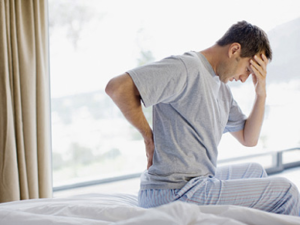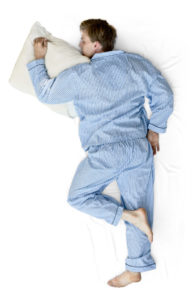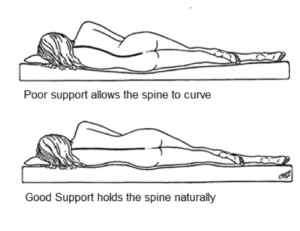Those Morning Aches and Pains

“How come I wake up in the morning, in pain?”
As an Osteopath, I get asked this question on a regular basis, by a variety of patients. We know that sleep is a restorative activity, one which provides the body with an opportunity for growth and repair, a time to recover from the stress of day to day life. Yet some would argue they wake in a worse state of pain compared with how they felt when they pulled the covers over the night before.
Research shows that Australians are getting, on average, more than 7 hours of sleep per night. So, why the pain?
There are many reasons and perhaps it’s time to think of sleep quality rather just time sleeping.
When we sleep, our body is practically motionless. Therefore, it is critical that we optimise this time of low activity, to ensure that we wake without pain, and start the day feeling fresh, well rested, and energised.
Whilst there are many causes for waking in pain, in this article, I would like to explore two areas which I believe contribute significantly to the quality of the sleep you may be getting, and indeed your ability to wake without pain.

Does this sleeping position look familiar to you?
Many of us love to sleep on our stomach, but this sleep position is far from ideal. You may find it comfortable, but sleeping on your stomach places the spine in a position, that, when held for an extended period, can lead to pain and discomfort.
One reason for this is due to the position of your neck and spine. Your neck twisted acutely to one side with your spine working to compensate. These contrasting directional planes of movement can cause you to wake with a headache, neck ache, and/or low back pain.
So, what can be done to improve the state in which you wake, and transition you towards being a morning person who bounds out of bed every day?
Firstly, try learning to fall asleep on your side.
You may find this a little challenging in the beginning, but sleeping on your side is a far better position for your body.
One handy tip I like to pass on to my patients, which serves to keep the body on its side while you sleep, is to keep your bottom arm in front of you at all times. A pillow between your knees or a pillow held in front of you, can also assist with this. This will help to prevent the body from rolling on to its front, as much as possible.
Secondly, ensure your mattress and pillow will support your body properly.
Do you have an old favourite pillow that is now wafer thin? Does your mattress slope to the middle? Do you wake up in the centre of the bed in a nice little valley? If so, it might be time to review these two key elements to improve your night’s sleep.

Your mattress needs to support the key areas of your body which will allow the spine to be maintained in a straight position throughout the night.
A common myth I hear quite often, is that a firm mattress is the best kind of mattress….not so! A mattress that is too firm elevates the two parts of the body that make contact with it – the shoulders and hips. This in turn causes an undesirable amount of curvature to the spine.
At the other extreme, a mattress that is too soft, presents an opportunity for the body to sink too far into it, and again, cause an undesirable amount of curvature to the spine.
No single mattress is perfect for everyone. It is important that when you are purchasing a bed, you take the time to lie on it for as long as possible. One minute in the furniture showroom will not give you an accurate guide of how the mattress will perform over eight hours, night after night!
Much like shopping for the perfect mattress, you should ‘try before you buy’ when searching for the best pillow! A handy way to measure if a pillow is the right size for you, is fitting the pillow between your shoulder and neck. The pillow is the right height when it’s the same as the distance from the top bony point on your shoulder to where your neck meets your shoulders. If your pillow is too high or too low, it can compress through the joints of your neck, and cause both joint sprains, and muscle strains.
To make your life easier, memory foam pillows are available at our Clinic’s reception, and can be fitted to you.
So as you go to bed tonight, spare a thought for the muscles and joints in your body that look after you during the day, and look after them at night!
You will be pleased with not only the quality of sleep you will achieve but also the stiffness and pain you can avoid if you can change from stomach snoozing, paper thin pillows and mattress that do not support you properly.…
If you’d like to discuss anything I’ve mentioned in this article or your symptoms persist, please let me know and I am happy to answer any questions or treat any persistent problems!
Dr Damien Ryan
Osteopath
B.Hlth.Sc, B.App.Sc (Comp Med), B.Hlth.Sc/B.App.Sc (Osteopathy)
Muscle And Bone Clinic
8 Chatham St Prahran
www.muscle-boneclinic.com.au
